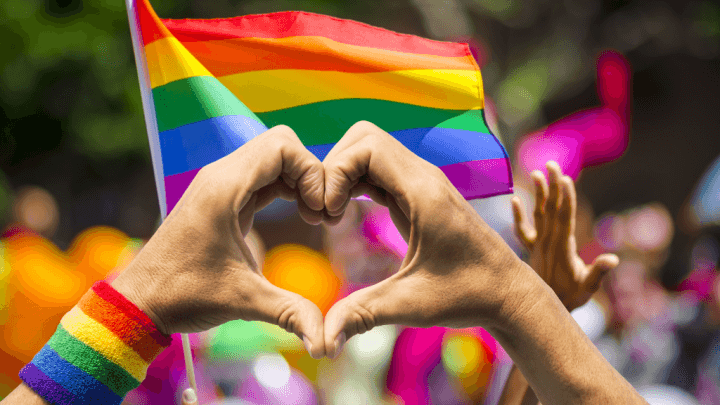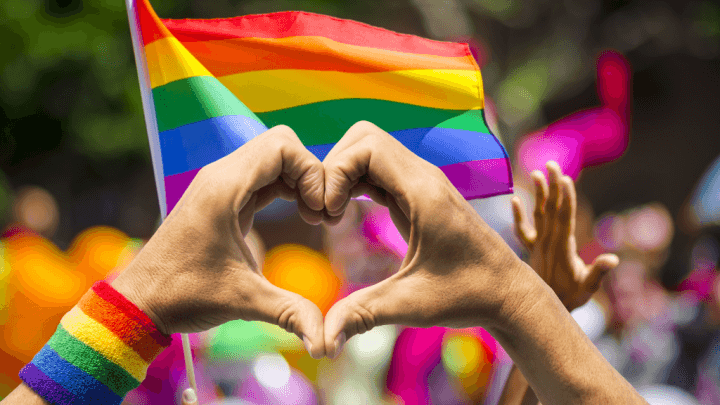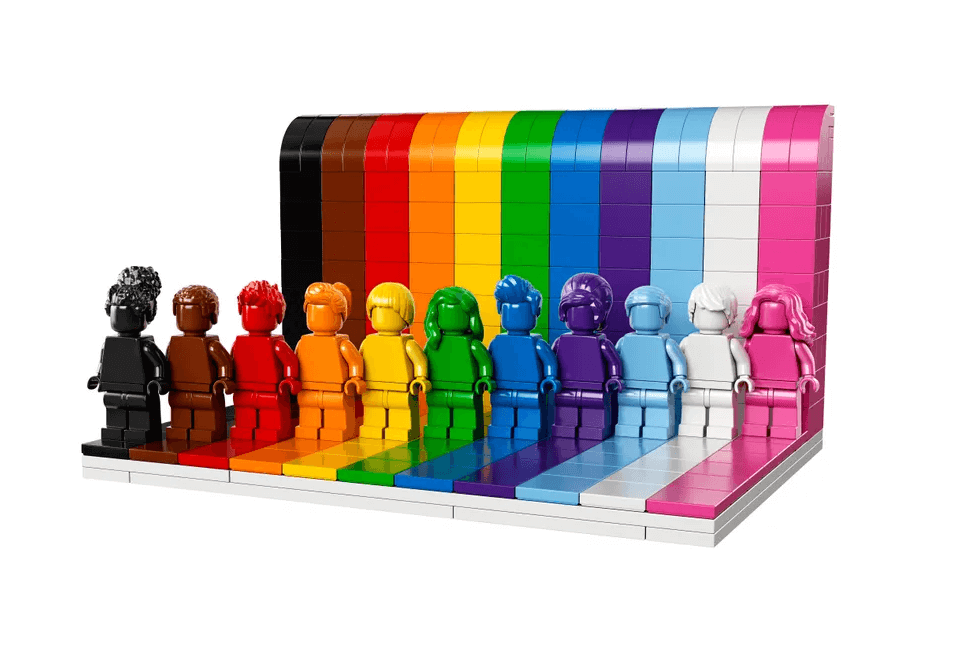What Should Your E‑Commerce Homepage Look Like? Tips & Examples
Your homepage has a few seconds to make or break a sale. Learn the essential homepage best practices that build trust and turn visitors into customers.

June is Pride month. Many brands are surfing the rainbow flag trend, which can be good: bringing attention to the topic, building awareness, and encouraging discussions are all good things. However, sometimes the line between sustaining a battle that is close to heart and exploiting a trend for marketing purposes, and thereby attracting criticism, is thin. So, let's see how we can treat the issue with the attention it deserves and avoid any faux pas.
Table of contents:
Not too long ago, gay and trans people had virtually no right to exist and could be arrested on charges of "indecency". Police raids on the streets and in bars against LGBTQ + people were not uncommon, even in big cities. In June 1969 , police raided the Stonewall Inn , a gay bar in Manhattan, New York, with the intention of detaining and punishing as many people as possible.
According to some versions of the story, a trans woman, Sylvia Rivera, tired of police abuses, threw a bottle at one of the members of the police, starting a real revolt known precisely as the Stonewall Riots. This then evolved into a political movement aimed at reclaiming the civil rights of gay and trans people. It is seen as the symbolic moment in which gay pride was born, and it is also the reason why June is the month in which Pride parades are held.
From June 1st on, we see that much of the online and offline world is draped in all the colours of the rainbow. As we mentioned, June is also when many Pride parades take place around the world.
The event is open to all people who are part of the LGBTQ+ spectrum (acronym for Lesbian, Gay, Bisexual, Trans, Queer, etc.). It was chosen to call it Pride and no longer "Gay" pride because it also addresses heterosexual people who do not identify with the gender assigned to them at birth.
Let's clarify a few things regarding sexual orientation and gender identity. Despite being two very different things, many people still struggle to distinguish between the two.
🌈 A person's sexual orientation indicates who they feel physically and romantically attracted to (and the two don't always match).
🏳️🌈 A person 's gender identity indicates the feeling of belonging to a certain gender. There can be some confusion about the terms gender and sex as well. The World Health Organisation regional office for Europe describes sex as characteristics that are biologically defined, while gender is based on socially constructed features. If a person feels comfortable with the sex assigned to them at birth, they are called cisgender. If not, there is a spectrum that the person can belong to, and they can be transgender, agender, or non-binary.
A person's gender does not necessarily affect their orientation, which is why Pride is no longer known only as "Gay Pride".

Shutterstock/lazyllama
Before we answer why it is needed, let’s first acknowledge that is indeed still needed. In addition to remembering the historic moment in which LGBTQ+ people began to claim their rights, Pride still serves us today to:
It must also be considered that homosexuality is still a crime in many countries around the world, and that, even where legal, it can still be culturally unacceptable to show oneself openly in public.
Below is a map showing where and to what extent it is permissible to be openly gay and where not. If you can't see it properly, you can right-click and open it in a new window. 👇
Source: ILGA world
Alfred Adler once said ““Empathy is seeing with the eyes of another, listening with the ears of another and feeling with the heart of another.” Empathy can be difficult, especially if we’ve never experienced the injustices of others first hand. It’s easy to understand how those who do not directly experience certain situations do not believe that they exist or that they are important.
Curious to see how “privileged” you are? Take this test from Buzzfeed.
Just open LinkedIn to be inundated by logos that, like every year, in the month of pride, are tinged with the colours of the rainbow. This in itself is not bad: it is good to show support for important causes and to amplify the reach of the message. Just don't get caught up in Rainbow washing.
🌈 Rainbow washing (aka pink washing) is a new expression that derives from the union of rainbow and whitewashing. Similarly to the green washing, which we have already mentioned, it indicates support for the LGBTQ + community only on the face, generally dictated by the advantages a brand can get by doing so (i.e. to increase revenue and conversion rates).
When it comes to such issues, in fact, there must be a correspondence between words, intentions and actions. Younger consumers (i.e. Generation Z) especially do not let themselves be fooled by a different logo.
Recommended reading:
What Steps Can Your Business Take to Go Green?
Rule number 1 is to avoid using pride month as a simple marketing strategy to increase your sales. However, if the theme is genuinely close to your heart, be consistent . For example you can:
As is the case with "Black Lives Matter", it is not necessary to be gay or non-binary to support a struggle for equal rights.
Some of those in the community have added an “A” to the LGBTQ+ acronym. The “A” stands for “asexual” or “agender”, but another “A” belongs here as well: one that stands for “ally”.
An ally is a person who, while being cis and straight, supports and is part of the LGBTQ+ movement.
Let’s look at some examples of marketing campaigns that have showed support for the LGBTQ+ community which was well-received.
Lego has been fighting gender stereotypes for some time. Furthermore, the Lego Group is affiliated with various LGBTQ + associations and promotes spaces within the workplace dedicated to diversity and the creation of inclusion policies which have come from the staff themselves.

Source: Lego.com
For IDAHOBIT (International Day Against Homophobia, Biphobia and Transphobia) 2021, Ikea created the "Let’s build a world where everyone can feel at home" campaign. Ikea published a carousel of opinions of discriminated people in order to raise awareness about their problems and give them a voice.
But the furniture giant didn’t start there. The Swedish brand, in fact, has been sharing inclusive advertising campaigns for years, but not only to improve their brand image. For years, Ikea has not only been a pioneer of gay-friendly advertising, they’ve worked hard at creating an inclusive workplace that respects everyone's rights.
In fact, Ikea boasts a global LGBTQ+ inclusion plan, has collaborated and co-created the United Nations standards of conduct against gender discrimination and sexual orientation, and is a member of the Stonewall and Workplace Pride Foundation, two associations that deal with the rights of LGBTQ + people in the workplace.
For the month of Pride, the streaming platform Disney+ will host a series of documentaries (Pride) that chronicles the struggles of the US LGBTQ+ community from the 1950s to 2000.
In addition, the animation giant is a member of several associations, including Out & Equal Workplace Advocates, GLSEN, Trevor Project and Human Rights Campaign.
However, the Disney case is controversial: the brand has in fact been accused of “queerbaiting”.
Queerbaiting is a marketing technique in the world of entertainment and storytelling in which producers allude to potential LGBTQ+ characters without ever representing them in full and without officially declaring them gay or non-binary.
In addition to that, there was the controversial “Don’t Say Gay” bill policy in the state of Florida earlier this year, the home state of Disneyland, which employees over 80,000 workers. Many people accused Disney of not using their influence enough to stop the bill from passing.
Even before the 1990s (before it became mainstream ), the coffee beverage chain, Starbucks, was committed to creating a workplace based on acceptance and inclusionary policies. In 1988, it offered health benefits to LGBTQ+ staff and contributed financially to the 'civil union of persons of the same sex’. In 1996, the Starbucks Pride Partner Network was created, which is still active and still boasts thousands of partners around the world.
We've only talked about established brands, but you too can do something. Even if it’s “small” actions in your business or your private life, you can do something without having to turn yourself into a full-time activist.
Start by understanding that, as a cis or straight person, you have privileges and are not discriminated against or discriminated against because of your identity or sexual orientation.
Create a work environment where people feel comfortable and can express who they really are. Do not dye your brand with the colours of the rainbow if you do not intend to actively undertake employment policies of inclusion or if you do not intend to financially support LGBTQ+ associations. In short, do not use pride just to sell more. And remember that there are eleven more months on the calendar besides June.
This article was translated and adapted from our Italian blog: Giugno tra Pride e Rainbow Washing - evita scivoloni
17/06/22Your homepage has a few seconds to make or break a sale. Learn the essential homepage best practices that build trust and turn visitors into customers.
Product reviews can have a big impact on your online shop. Whether it's conversions, building trust, or SEO, learn why your shop needs product reviews.